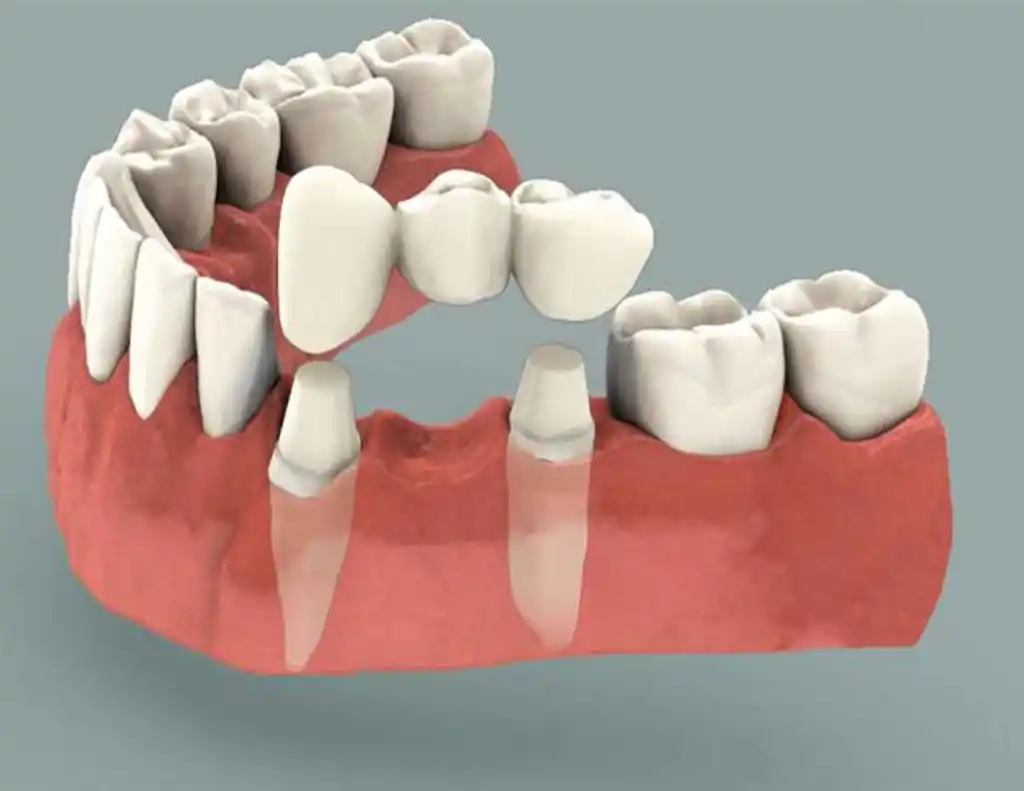
A dental bridge is a prosthetic device used to replace one or more missing teeth by literally “bridging” the gap between remaining teeth. It helps restore function, appearance, and bite alignment and prevents other teeth from shifting.
Types of Dental Bridges
- Traditional Bridge
- Most common type.
- Consists of one or more false teeth (pontics) held in place by crowns cemented onto adjacent healthy teeth (called abutments).
- Strong and durable.
- Cantilever Bridge
- Similar to a traditional bridge but supported on only one side.
- Used when there is only one adjacent tooth next to the gap.
- Maryland Bridge (Resin-Bonded)
- Held in place by a metal or porcelain framework bonded to the backs of adjacent teeth.
- Less invasive but not as strong—mainly used for front teeth.
- Implant-Supported Bridge
- Uses dental implants instead of natural teeth for support.
- Most stable and long-lasting option.
- Often used when multiple teeth are missing in a row.
🔹 Benefits of a Dental Bridge
- Restores ability to chew and speak properly.
- Prevents shifting of surrounding teeth.
- Maintains facial structure and smile.
- Distributes bite forces evenly.
- Improves aesthetics.
🔹 Procedure Overview
- Preparation: Adjacent teeth are reshaped if crowns are needed.
- Impression: A mold is taken for custom bridge fabrication.
- Temporary bridge: May be placed while the permanent one is made.
- Placement: The final bridge is adjusted and cemented into place.
🔹 Aftercare
- Brush and floss daily—special floss or interdental brushes are often needed.
- Regular dental checkups.
- Avoid very hard or sticky foods.
- Clean under the bridge daily to avoid decay or gum issues.

